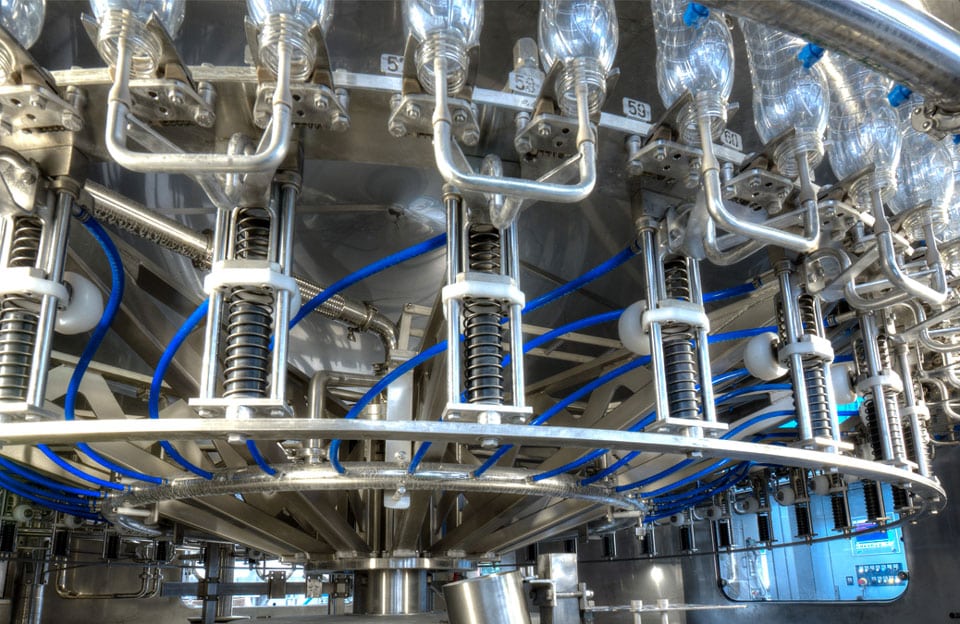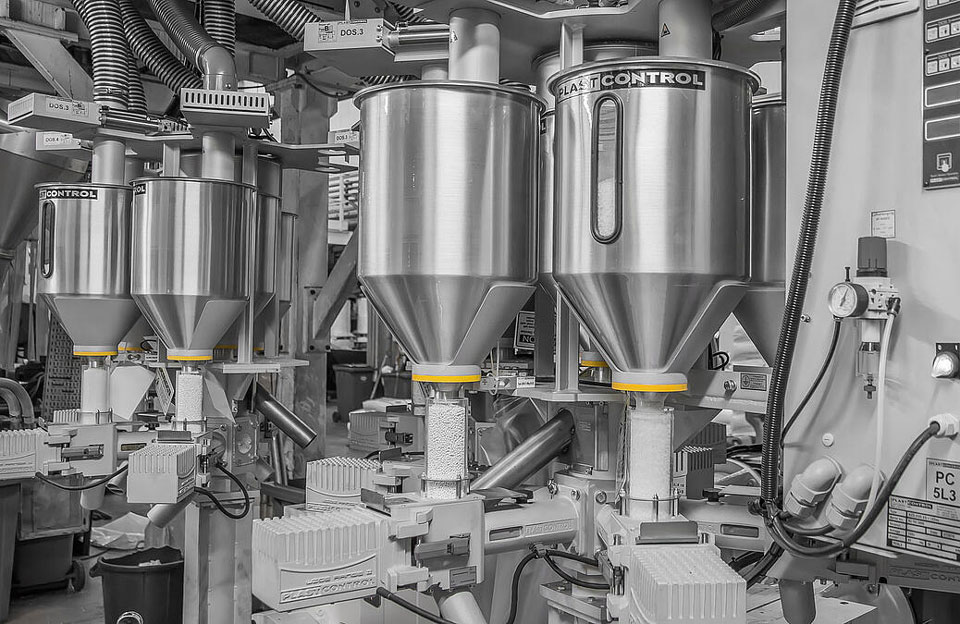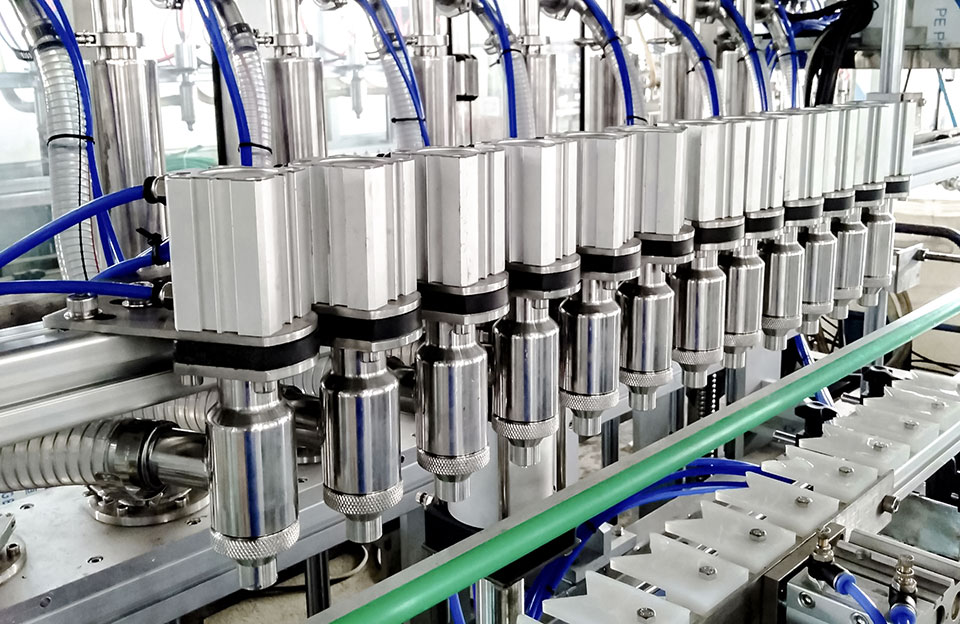Global Liquid Filling Machine Market
The global liquid filling machines market is witnessing steady growth owing to the increasing demand for efficient and accurate filling solutions across various industries. The future of liquid filling packaging technology is bright.Market Size and Growth: The global filling machine market is expected to reach 5.6 billion by 2032, growing at a compound annual growth rate of 5% from 2022 to 2032. The growth of the liquid filling machines market can be attributed to various factors including increasing demand for packaging products, technological advancements leading to the development of more efficient and precise filling machines, and regulatory requirements mandating the use of sterile filling equipment in the pharmaceutical industry.
- Applications in All Walks of Life: liquid filling machines are used in a wide range of applications, including food and beverage, medicine, cosmetics, chemicals, personal care products, household products, etc. Filling materials usually include beverages, oils, sauces, dairy products, drug solutions, emulsions, etc.
- Automation and Efficiency: Facing the needs of enterprises to improve production efficiency and reduce labor costs, the market for automated liquid filling machines is also growing. Automated machines typically employ advanced technologies such as servo drive systems, volumetric filling mechanisms, and integrated control systems that provide greater accuracy, faster filling speeds, and the ability to consistently handle large volumes.
- Customization and Flexibility Needs: liquid filling machines utilize various filling technologies to accommodate different types of liquids and container formats. Many industries require liquid filling machines that can handle a wide variety of container sizes, shapes and materials. Faced with liquids of varying viscosities, foaming liquids, hot or cold products, and special container shapes, manufacturers are offering customizable machines that can be adjusted to suit different product and packaging requirements.
- Cleanliness and Hygiene: Liquid filling machines used in industries such as food, beverage and pharmaceuticals must adhere to strict standards of cleanliness and hygiene. Manufacturers use more hygienic, easy-to-clean, CIP (clean-in-place) systems and FDA-compliant materials to meet sanitation standards and ensure product safety.
- Integration with Packaging Lines: Liquid filling machines are often integrated into complete packaging lines, working in conjunction with other equipment such as capping machines, labeling systems and packaging conveyors. This integration simplifies production processes, increases line efficiency and ensures seamless coordination between filling and packaging operations.
- Sustainability: The liquid filling machine market is paying more and more attention to sustainability. Manufacturers are developing eco-friendly machines that minimize product waste, lower energy consumption, and use recyclable or biodegradable packaging materials.
- Regional Market Dynamics: The demand for Liquid Filling Machines varies by region. Developed economies such as North America and Europe have well-established industries and stringent quality standards, driving the demand for advanced filling technologies. Emerging economies in Asia Pacific, Latin America, and the Middle East are undergoing rapid industrialization, and there is an increasing demand for liquid filling machines in various industries.
Improvement of liquid filling machine
Liquid filling machines have undergone major improvements to increase their performance, accuracy and efficiency.
- Accuracy and Precision: Advanced liquid filling machines now incorporate precise measurement technology to ensure accurate and consistent fill volumes. These machines utilize high precision sensors, flow meters or volumetric filling mechanisms to achieve precise fill levels, minimizing product waste and ensuring product quality.
- Automation and Integration: Liquid filling machines have become more automated with advanced control systems and programmable logic controllers (PLC). Automation allows precise control of filling parameters such as filling speed, duration and nozzle positioning. Integration with other packaging line equipment, such as cappers and labelers , allows for seamless operations and increases overall efficiency.
- Changeover and Flexibility: Modern liquid filling machines are designed for quick and easy changeover between different product types, container sizes or fill volumes. Adjustable components, tool-less replacement parts, and intuitive set-up are designed to allow operators to efficiently switch between settings, reducing downtime and increasing production flexibility.
- Hygienic Design and Cleanability: Hygiene and cleanability are critical in industries such as food, beverage and pharmaceutical. Liquid filling machines are now hygienically designed with smooth surfaces, sloped angles and easy-to-clean components. CIP (Clean In Place) systems and material selection that meet strict regulatory standards help keep things clean and prevent contamination risks.
- Advanced Control and Human-Machine Interface (HMI): The liquid filling machine has an improved control system with a user-friendly HMI. The HMI provides the operator with intuitive control of filling parameters, allows real-time monitoring of machine performance, and provides diagnostics to quickly identify and resolve problems. Enhanced connectivity and data collection support data-driven decision making and process optimization.
- Reduce Rrips and Spills: Liquid filling machines now have advanced features that minimize drips and spills during filling. Anti-drip spout, controlled flow system and positive shut-off mechanism prevent product loss, keep it clean and increase overall productivity.
- Integration of Safety Functions: Safety functions are an important aspect of liquid filling machines to protect operators and prevent accidents. The machine is equipped with safety interlock device, emergency stop button, protection system and safety sensor to ensure the safe operation of the equipment.
- Energy Efficiency: Manufacturers are paying more and more attention to the energy-efficient design of liquid filling machines. Energy efficient components, servo drive systems, variable frequency drives and optimized power consumption help reduce energy usage and lower operating costs.
- Remote Monitoring and Maintenance: The liquid filling machine adopts the remote monitoring function, which can perform real-time performance monitoring and diagnosis. With remote access, manufacturers can monitor machine health, track production data and provide remote support to resolve issues faster and minimize downtime.
- Sustainability and Environmental Considerations: The liquid filling machine has been developed with sustainability in mind. Manufacturers are incorporating features that reduce product waste, minimize energy consumption, and incorporate environmentally friendly packaging materials. Some machines also have the ability to recycle or reuse liquid and packaging waste.
Conclusion
The global liquid filling machines market is expanding owing to the demand from various industries for efficient, accurate, and hygienic liquid filling solutions. Demand for advanced liquid filling technologies is expected to remain strong as the industry continues to evolve and consumer preferences change. These improvements in liquid filling machines help increase productivity, accuracy, efficiency, cleanliness, and sustainability across industries. Continuous advancements in technology and customer demands continue to drive innovation in liquid filling machine designs, allowing manufacturers to meet changing market demands.


